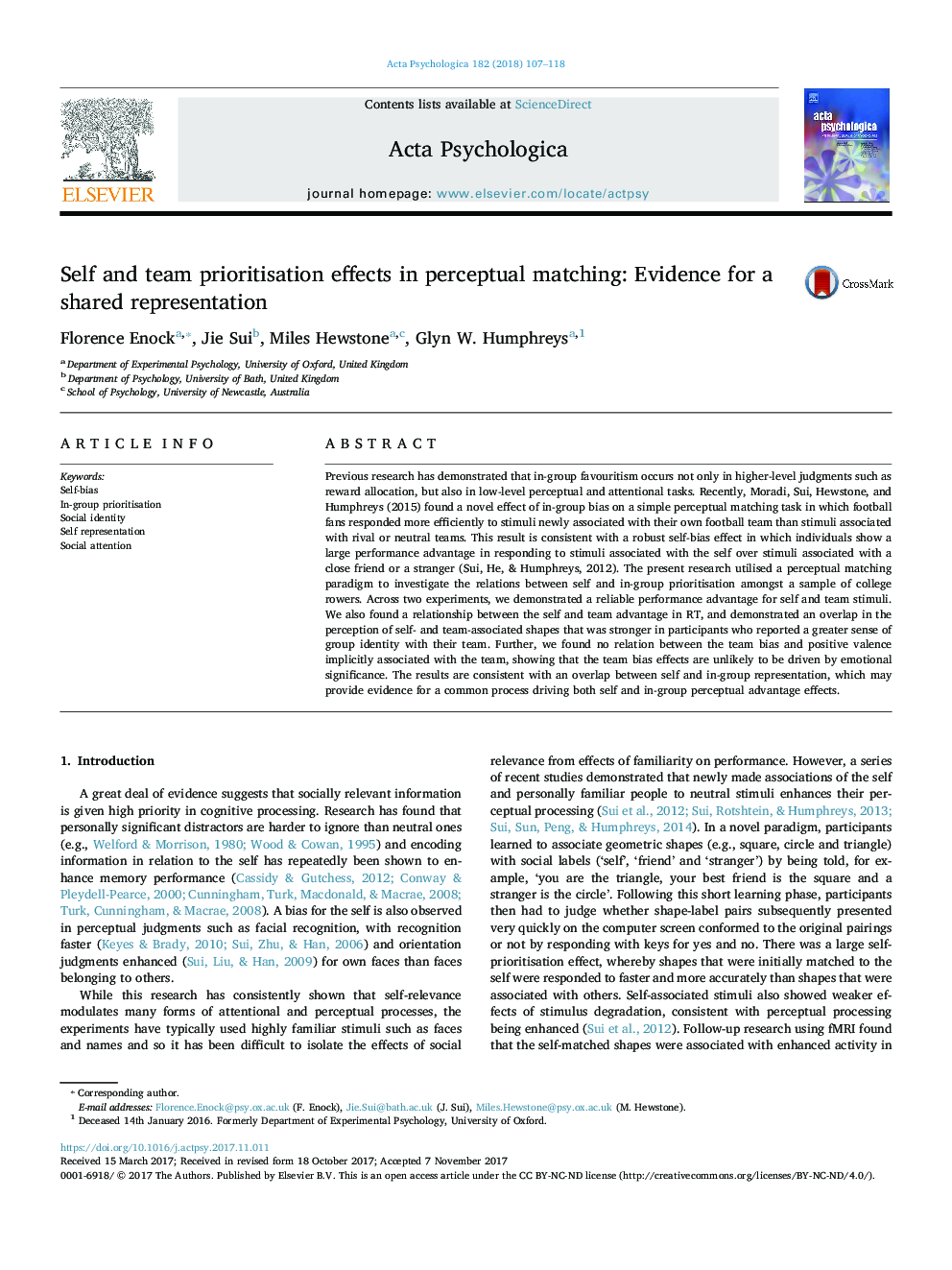| Article ID | Journal | Published Year | Pages | File Type |
|---|---|---|---|---|
| 7276886 | Acta Psychologica | 2018 | 12 Pages |
Abstract
Previous research has demonstrated that in-group favouritism occurs not only in higher-level judgments such as reward allocation, but also in low-level perceptual and attentional tasks. Recently, Moradi, Sui, Hewstone, and Humphreys (2015) found a novel effect of in-group bias on a simple perceptual matching task in which football fans responded more efficiently to stimuli newly associated with their own football team than stimuli associated with rival or neutral teams. This result is consistent with a robust self-bias effect in which individuals show a large performance advantage in responding to stimuli associated with the self over stimuli associated with a close friend or a stranger (Sui, He, & Humphreys, 2012). The present research utilised a perceptual matching paradigm to investigate the relations between self and in-group prioritisation amongst a sample of college rowers. Across two experiments, we demonstrated a reliable performance advantage for self and team stimuli. We also found a relationship between the self and team advantage in RT, and demonstrated an overlap in the perception of self- and team-associated shapes that was stronger in participants who reported a greater sense of group identity with their team. Further, we found no relation between the team bias and positive valence implicitly associated with the team, showing that the team bias effects are unlikely to be driven by emotional significance. The results are consistent with an overlap between self and in-group representation, which may provide evidence for a common process driving both self and in-group perceptual advantage effects.
Related Topics
Life Sciences
Neuroscience
Cognitive Neuroscience
Authors
Florence Enock, Jie Sui, Miles Hewstone, Glyn W. Humphreys,
